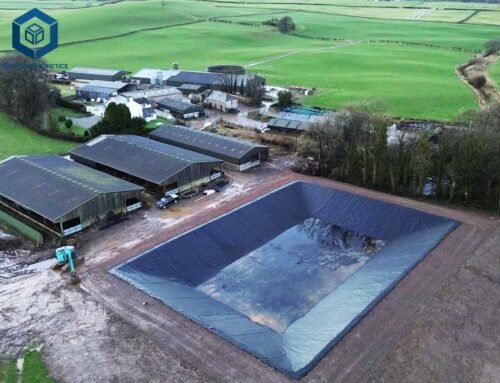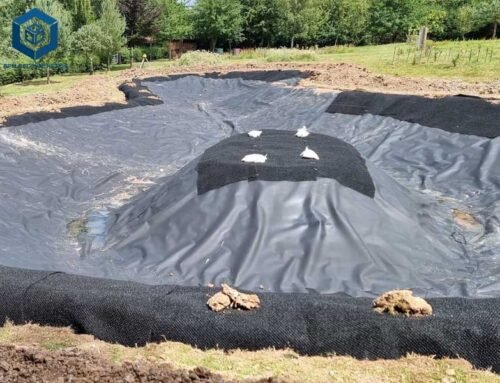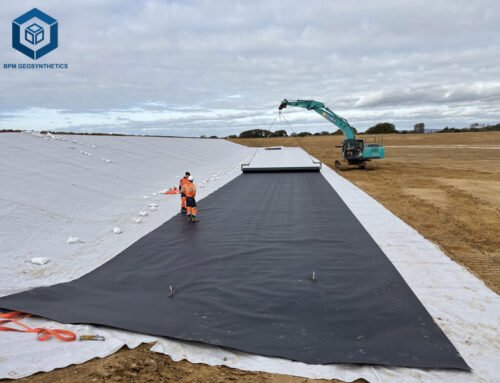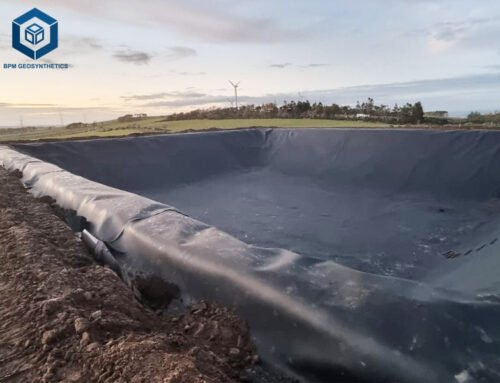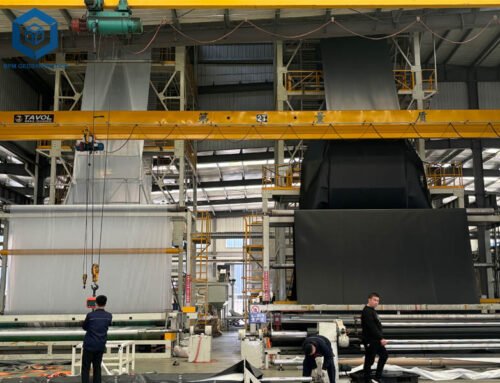With the development of the economy and society and the advancement of urbanization, we generate more and more garbage. Building landfills is a way for us to dispose of garbage and protect the environment. Landfill Liner is new designed anti-seepage material for landfill projects and it is used more and more. Landfill Liner is low cost, and lightweight, easy to weld and install. Above all, the BPM Geomembrane Landfill Liner has excellent mechanical property and anti-seepage property which suit best for landfill projects. the operating cost of the landfill is reduced, and environmental safety is guaranteed. Sanitary Landfill Liner is becoming more and more popular, the article will introduce the tips to help to choose the right ones.
1. Types of Sanitary Landfill Liner
Building a landfill project is an essential and right way for us to dispose of garbage and protect the environment. Landfill Liner is new designed anti-seepage material for landfill projects and it is used more and more.
Landfill Liner is a kind of designed anti-seepage material for landfill project programs. HDPE Landfill Liners have the following advantages, such as high strength, good anti-seepage performance, strong anti-corrosion, anti-aging ability, and convenient construction. The reliability application is good. HDPE Landfill Liner is a kind of Landfill Liner, it is an ideal material for landfill liner.It is made of high-density polyethylene virgin resin and other additives such as carbon black, antioxidant, ultraviolet absorber, thermal stabilizer.
Which makes HDPE Sanitary Landfill Liner has the following advantages :
- Good impermeability;
- Corrosion resistance to most chemical substances;
- Good mechanical and welding characteristics;
- Good working characteristics at low temperature;
- Can be made into various thicknesses;
- Not easy to age with a long service time which can be up to 70 years.
Thus, it is used in the anti-seepage treatment of landfills. HDPE film has two kinds of the rough surface and smooth surface. The rough surface is used for slope surface to increase stability and prevent landslides. The smooth surface is used at the bottom of the landfill, which is cheap and applicable. The textured surface is used at the slope of the landfill project.
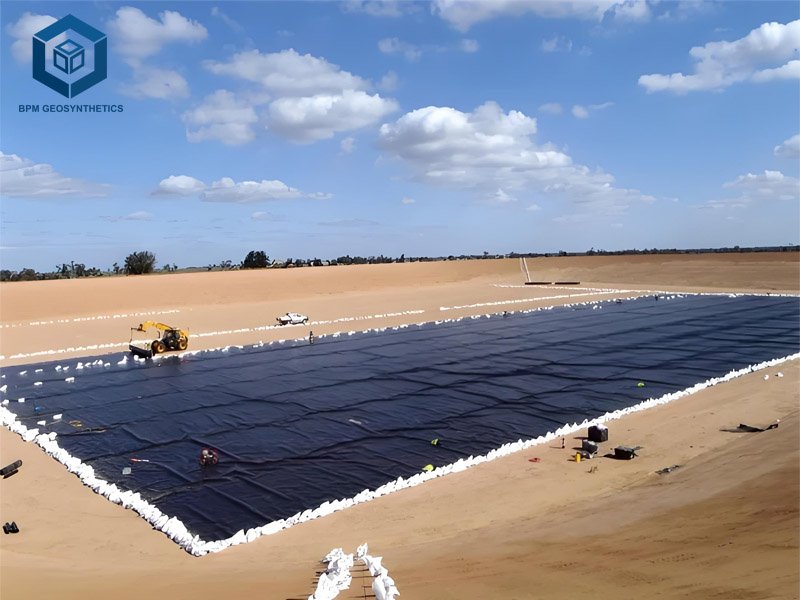

2. Sanitary Landfill Liner Thickness Selection
2.1 Thinner Liners (0.2mm – 1.0mm) – Suitable for Less Demanding Applications
- Water containment (ponds, reservoirs, irrigation canals)
- Agricultural lagoons
- Decorative water features
- Temporary containment solutions
- These applications primarily deal with water and do not involve harsh chemicals or sharp objects.
- Cost-effective while still providing good waterproofing.
2.2 Thicker Liners (1.5mm – 3.0mm) – Designed for Landfills & Harsh Environments
Ideal for:
- Municipal solid waste (MSW) landfills
- Hazardous waste landfills
- Industrial waste containment
- Mining heap leach pads
Why?
- Landfills contain sharp debris, heavy loads, and aggressive chemicals.
- Thicker liners offer superior puncture resistance, tensile strength, and chemical resistance.
- Landfill caps may use slightly thinner liners (e.g., 1.0mm) since they face less mechanical stress.
2.3 Choosing the Right Thickness?
- Consult project engineers for technical requirements.
- BPM’s experts can recommend the best thickness based on:
- Waste type (liquid, solid, hazardous)
- Environmental regulations
- Site conditions (soil, climate, stress factors)
3. Sanitary Landfill Liner Material Selection
Landfill liners are geosynthetic anti-seepage materials composed of a plastic film (as the impermeable layer) and non-woven geotextiles (for reinforcement). The impermeability primarily depends on the plastic film material.
3.1 Sanitary Landfill Liner Used in Landfill Liners
Different materials offer varying levels of chemical resistance, flexibility, and durability:
| Material | Key Properties | Best For |
|---|---|---|
| HDPE (High-Density Polyethylene) | High strength, excellent chemical resistance, UV stability | Landfills, hazardous waste, mining, heavy-duty containment |
| LDPE (Low-Density Polyethylene) | More flexible, good elongation, lower chemical resistance | Ponds, irrigation canals, less aggressive environments |
| PVC (Polyvinyl Chloride) | Flexible, cost-effective, moderate chemical resistance | Decorative ponds, temporary liners, non-hazardous liquid storage |
| EVA (Ethylene Vinyl Acetate) | Highly flexible, good low-temperature performance | Exposed liners, floating covers, cold climates |
3.2 Why Choose HDPE Sanitary Landfill Liner?
- Superior chemical resistance (handles acids, alkalis, and hazardous leachates)
- High tensile strength & puncture resistance (withstands heavy waste loads)
- Long lifespan (50+ years under proper conditions)
- UV & temperature stability (suitable for exposed and buried applications)
3.3 Applications of Different Sanitary Landfill Liner
- HDPE Liners → Landfills, mining, industrial waste
- LDPE/EVA Liners → Water storage, agricultural ponds
- PVC Liners → Decorative ponds, temporary covers
4. Sanitary Landfill Liner Color Selection
4.1 Available Colors & Their Properties
Landfill liners come in black, white, blue, green, and brown, but color does not affect core performance factors like:
- Impermeability
- Chemical resistance
- Tensile strength
- Puncture resistance
However, black liners are the most popular because:
- Carbon black additive enhances UV resistance → Extends lifespan to 70+ years
- Better heat absorption → Helps in thermal expansion/contraction stability
- Standard for landfills & industrial applications
Other colors (white, blue, green) are used for:
- Aesthetic projects (decorative ponds, water parks)
- Environmental blending (camouflaging in natural landscapes)
- Temperature control (white reflects sunlight, reducing water heating)
4.2 Does Color Affect Quality?
- No, because color is added via precisely measured masterbatches during production.
- The manufacturing process ensures uniform color distribution without compromising:
- Thickness consistency
- Material durability
- Chemical resistance
4.3 Choosing the Right Color
| Color | Best For | Key Benefit |
|---|---|---|
| Black | Landfills, mining, industrial sites | Maximum UV protection, longest lifespan |
| White/Blue | Water reservoirs, aquaculture | Reflects sunlight, reduces algae growth |
| Green/Brown | Landscaping, golf courses | Blends with natural surroundings |


5. Sanitary Landfill Liner Cost
Compared to other construction materials, Landfill Liner is low cost, lightweight, easy to weld and install. Above all, it has excellent mechanical property and anti-seepage property which suit best for landfill projects. The operating cost of the landfill is reduced, and environmental safety is guaranteed.
6. About BPM
BPM own state-of-the-art manufacturing factory is located in Taian City, the famous tourist city near the expressway from Beijing to Shanghai, Shandong Province, China. In recent years, we had invested more than 20000000 dollars to improve the basic production facilities, working conditions, employee salary and welfare, technical and teamwork training, etc.
Our professional geommebrane factory is equipped with advanced processing machines and production lines, which give us the power to keep high product quality, shorter delivery time and competitive cost to meet the demands of our worldwide customers. Most of our products had been kept up with the international forefront counterparts, some of them have enjoyed leading position, especially smooth HPDE Landfill Liner. We also can manufacture according to your special requirements, ODM, OEM, customization are also available.
BPM Geosynthetics, are passionate about all things geosynthetics, from new product development, enhanced testing methodologies, production, to after-sale servicing. The group has focused on the development and production of high-quality Landfill Liner, nonwoven geotextiles, woven geotextiles, geonet and drainage geocomposites, geosynthetic clay liners (GCL) and geogrids. Today, BPM Geosynthetics is a team of over 100 professionals working to serve clients from all around the world.

